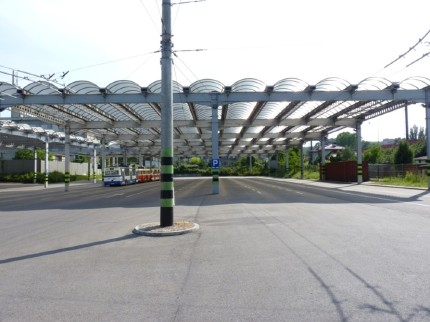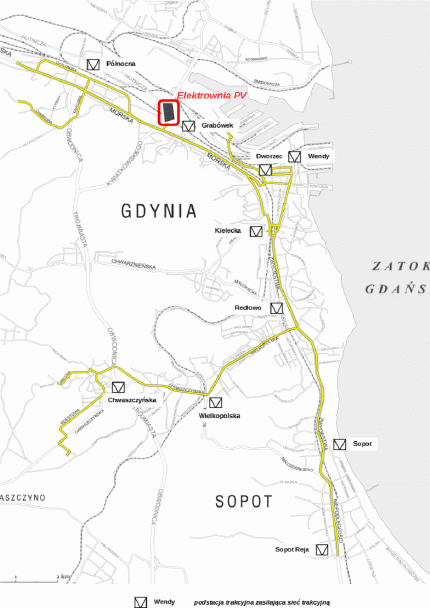Plans for more green energy in the trolleybus grid in Gdynia
27.04.2022
In the light of the latest tremendous and unprecedented rise in energy prices in Poland since the beginning of 2022, Gdynia trolleybus transport municipal operator’s (PKT GDYNIA) plans to invest in a photovoltaic power plant have become even more valid and urging.
PKT operates and maintains a 90 km long traction network (in both directions) in the cities of Gdynia and Sopot in the north of Poland by the Baltic Sea coast. The trolleybus network is currently in very good technical condition. Between 2010 and 2013 it underwent a deep modernization as a part of an EU project "Development of environmentally friendly public transport in the Tri-City Metropolitan Area" (ERDF). Currently, Gdynia grid is supplied from 10 state-of-the-art traction substations. The supply voltage of the traction network is 600 V.
To increase the share of renewable energy in PKT grid the investment still awaiting implementation is a photovoltaic power plant to be placed on the roofed parking spaces of the trolleybus depot. The size of the plant would be approximately 5000 m2, which is comparable to a size of a regular football pitch. Thus, that would be an example of a big power plant (500 kW).

Photo: Roofed parking spaces at a trolleybus depot in Gdynia – the planned photovoltaic power plant location (PKT)
The innovative aspect of this investment would be the fact that the energy derived from the panels would not be used to power the depot building but it in turn would be fed directly to the overhead contact line via a DC/DC converter, so it would be used directly to power the trolleybuses, which would be a novelty. What is more, thanks to the connections between the trolleybus system substations, it will be possible to direct the generated energy to the supply areas of other substations. All in all, the energy produced by the photovoltaic plant will be transmitted through the power supply system to the trolleybus overhead line, and then to the vehicles. It will be used to power trolleybuses while moving in the traction network area as well as to charge traction batteries for autonomous driving (IMC system).

Photo: A map of a trolleybus network in Gdynia with the location of the planned photovoltaic power plant at the depot intended to power the vehicles (PKT)
It has been calculated that the plant of the planned size will allow to cover ca. 5% of total power consumption needed by the traction network in Gdynia now. A yearly energy consumption amounts to circa 10 GWh, therefore the plant would translate into considerable financial savings taking into consideration very high costs of energy nowadays. Furthermore, the solution is also transferrable to other electric transport systems like tram or underground.
In order to be implemented a co-financing scheme is currently being actively searched for by PKT.
Background photo: PKT
Author of the article: Marta Woronowicz (PKT Gdynia)
